6 March 2016
Kalimpong Day 3: the downstream effects of poor urban water management
Posted by Dave Petley
Kalimpong Day 3: the downstream effects of poor urban water management
The town of Kalimpong sits on a ridge high above the valley floor. In common with many urban areas in poor countries (and sometimes in countries that are not poor too), water management is a serious problem, with a lack of sewers and storm drains. The upshot is that large volumes of water flow unregulated into natural channels during heavy rainfall, causing problems downstream. On Kalimpong Day 3, part of of our UKIERI / British Council supported visit, we saw a dramatic example of this issue. This gully lies a few kilometres downstream of the town. In living memory this was an area of paddy fields; now it has been eroded out and enlarged as the gully has had to handle greatly increased storm flows:
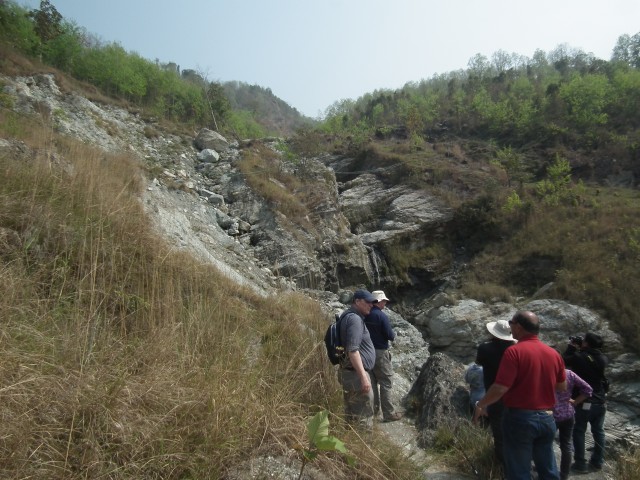
Kalimpong Day 3: members of the field party in front of a heavily eroded gully downstream from Kalimpong town
.
I suspect that the course of this gully follows an ancient landslide that was inactive until this gully enlarged. This image shows the walls of the gully – note the very heavily weathered and disturbed schist bedrock. The amount of erosion caused by the gully is very clear. Wing Commander Praful Rao from Save the Hills is standing at the top of the section for scale:
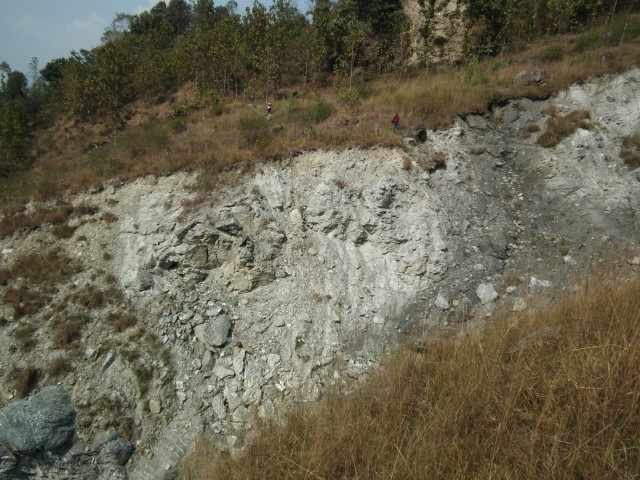
Kalimpong Day 3: erosion in a gully exposing an ancient landslide
.
Unfortunately the erosion in the gully is now triggering extensive landsliding. Immediately adjacent to the gully there slopes are actively deforming – sliding into the channel, which of course will cause further erosion. The path provides evidence of how bad this movement has become:
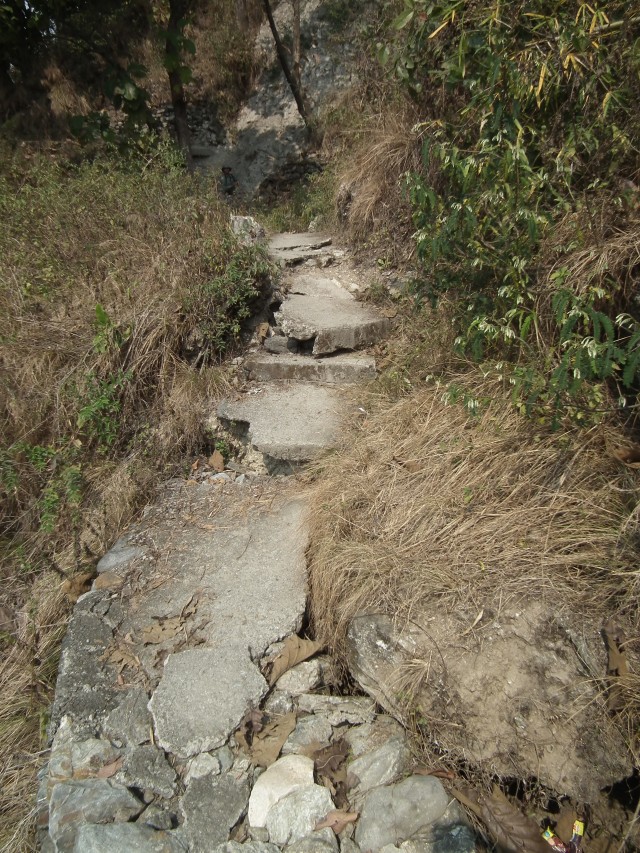
Kalimpong Day 3: Signs of serious instability in a footpath
.
This path is the access to a small community living on the other side of the gully from the road. Sadly, this community is also located on an ancient landslide that has also been reactivated by erosion in the gully. The effects on the houses are devastating:
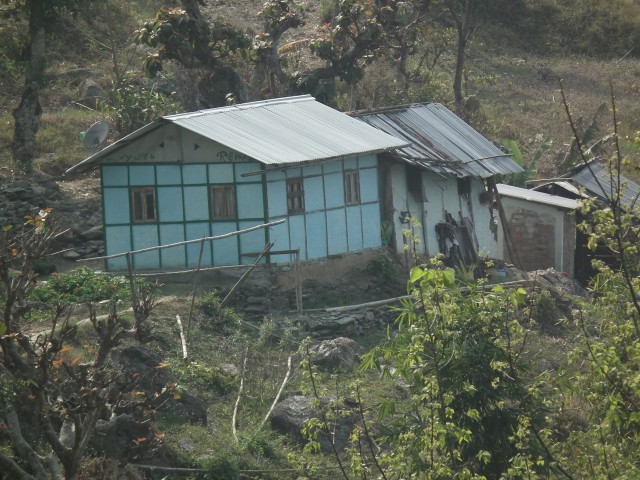
Kalimpong Day 3: landslide damage to a house
.
The damage to this house is not the fault of those living there, but is most likely the result of poor drainage in the town above. This problem is being exacerbated by a host of other things that are going on in this area. So, for example, at the top of the actively deforming slope with the path shown above, someone is dumping construction waste in an uncontrolled manner:
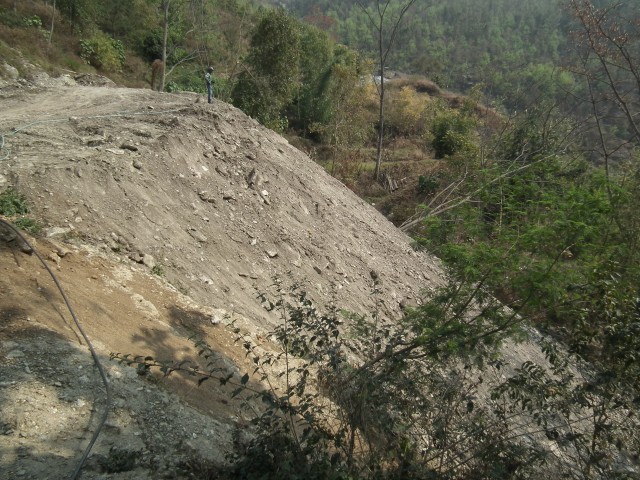
Kalimpong Day 3: uncontrolled dumping of construction waste on an active landslide
.
Adding a surcharge to the top of an active landslide in this way will inevitably make the stability problem worse. This sort of practice should be outlawed. Sadly, the effects of this dumping will be both further environmental damage and the destruction of the path that provides access to the community on the far side of the gully. This is all very preventable – there is a need for serious action to manage the slopes.


 Dave Petley is the Vice-Chancellor of the University of Hull in the United Kingdom. His blog provides commentary and analysis of landslide events occurring worldwide, including the landslides themselves, latest research, and conferences and meetings.
Dave Petley is the Vice-Chancellor of the University of Hull in the United Kingdom. His blog provides commentary and analysis of landslide events occurring worldwide, including the landslides themselves, latest research, and conferences and meetings.
Dave
Excellent coverage of the visits to the Kalimpong sites. The scale of these slides is humbling.
Gerard